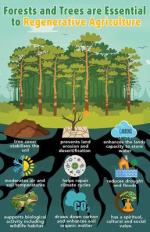eco water: 5 simple strategies in the home
clean drinking water
One eco water aspect is safety for drinking. Forget the expensive water filters, all heavy metals and other contaminants are lessened much more by letting the water run a few minutes and then tapping it off into a storage container made of high quality food grade plastic that does not give off any plastic smells or contaminants.
The drip bucket is enjoyed by my best friend.
a caveat:
Notably this is for water which is chlorinated and standing in the vat allows chlorine to evaporate before you drink it. I usually make tea or coffee with the water, and it cannot stand for months as the antiseptic effect of the chlorine will wear off as it slowly becomes contaminated with airborne micro organisms. Notably our water vat is not open but is an old brewing vat, with a lid, a tap and a bubble tube in the top. There are some pretty awful pathogens in un-chlorinated water, so this does not suggest that all water will be improved or become drinkable this way.
This eco water principle is aimed at human consumption, not saving resources. Tapping off lowers the very high
levels of metal contamination from old pipes, and it helped cure my headaches
which may have been due to copper poisoning, which eventually leads to organ
damage, so I’m happy.
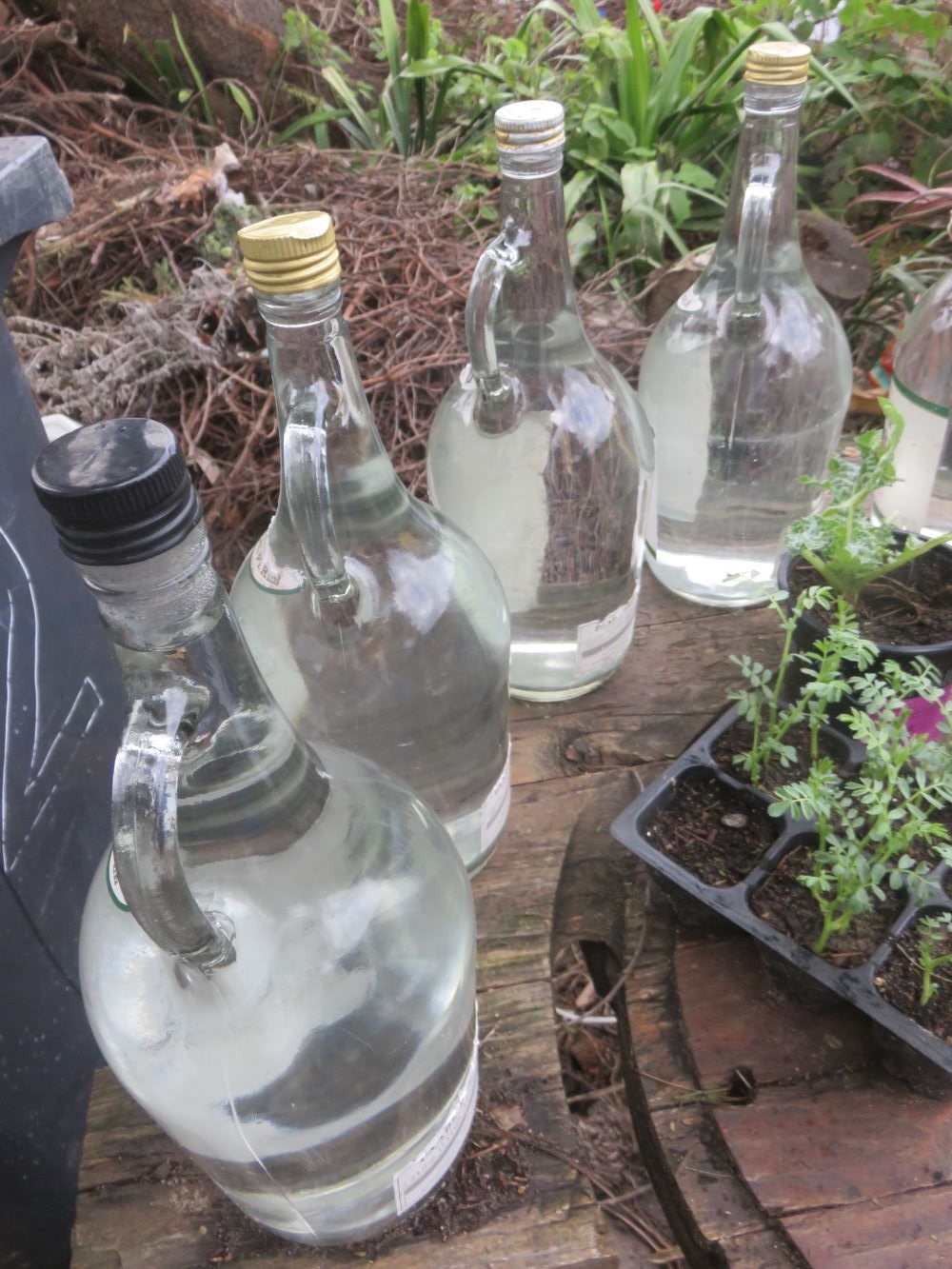 |
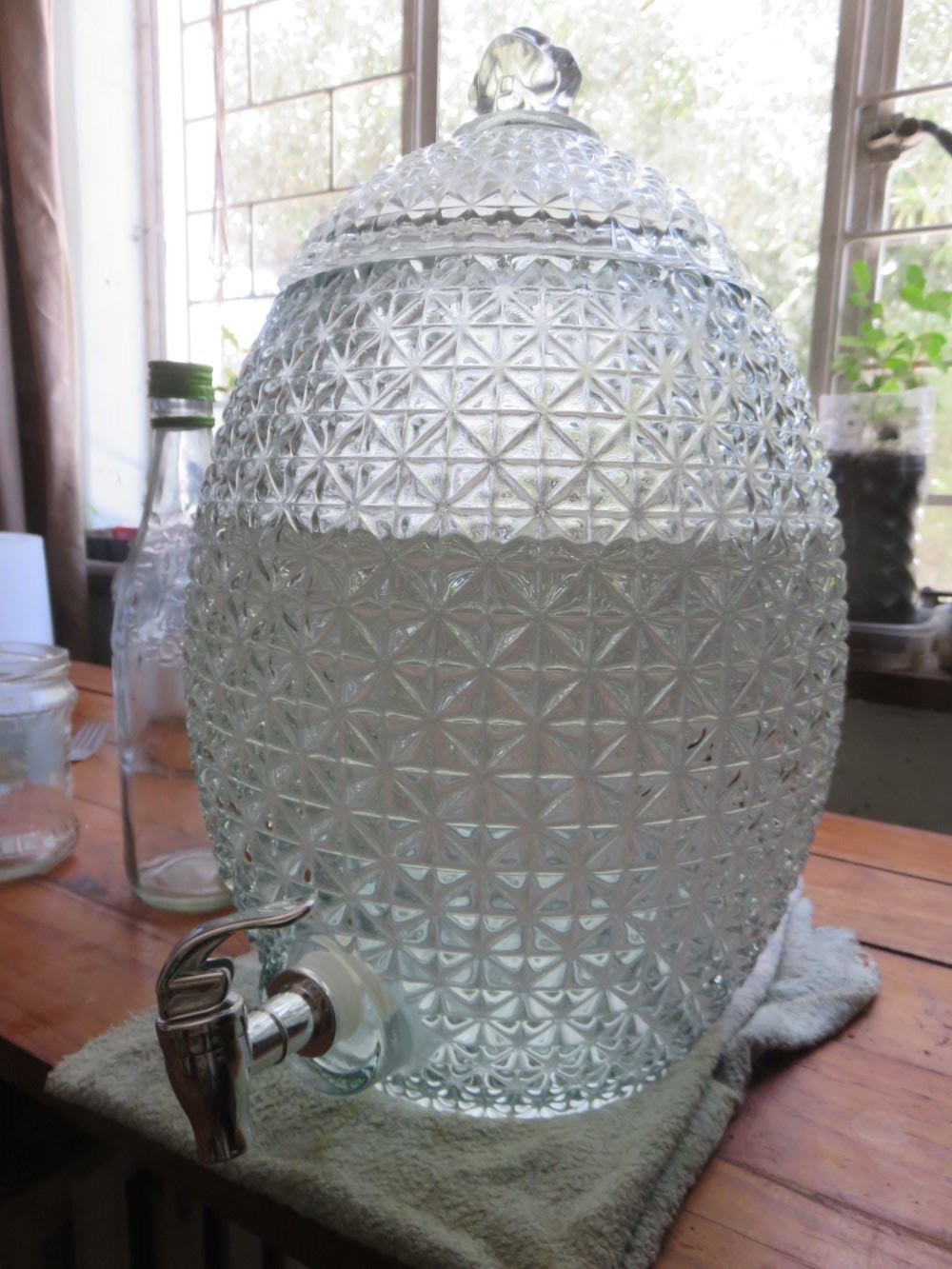 |
NB:
Since writing we have a changed to using glass only. The water goes
from the tap into 5 recycled glass wine flagons. After standing outside
for a day in the sun, which should evaporate off some of the
chloramines, it spends another day in the glass 'pineapple' tank in the
kitchen, and then is decanted into 75 milliliter drinking bottles.
Sunlight and pouring also do things to the crystal structure of water,
making it more 'hydrating' if you believe that theory. I do it anyway. It seems to improve the taste.

a natural swimming pool
Biofiltration allows the recycling of water contaminated by animal excreta. It is the ultimate in eco-water to replace normal swimming pool systems too. This koi pond is kept sparkling and clear by the biofilter in the box with the metal frames and outlet pipes behind. It is an old wine transportation tank, consisting of a cubic plastic vat in a supporting metal cage. It is full of shredded plastic sheeting filled into old orange pockets. A submersible pump in the pool pumps water into the biofilter, right to the bottom of the tank it goes in pvc piping, and then it wells up through the mass of shredded plastic. The plastic creates a huge surface area for bacteria which just populate it on their own without our intervention, and which feed on dilute ammonia from fish pee in the water, and produce nitrates, the perfect liquid fertilizer. This feeds the plants growing in the filter (tomato) and the small tank (Cyperaceae or papyrus grass) before flowing by gravity back to the pond. The plants are then harvested, removing Nitrogen from the system. The combination of biofilter and plants is also used in natural swimming pools which do not need chlorine or salt. Their water has a very much lower nitrogen load, without fish, and the amount of biofiltration may be less, but the pools I've seen have a lot of plantings around them, usually marsh plants like reeds.
pictures of natural swimming pools
eco water tricks in the home

grey water
I wanted to make a bio filtration system to recycle household water, but failed because the effluent from the washing machine goes black and putrefies. My guess is that you need a really large volume of water to accomplish this feat, with a lot more marsh plants. Less polluted grey water is easier to re-use. Washing clothes is so polluting of water and wasteful in terms of the quantities of water used. I applied eco-water thinking to washing clothes, and have come up with a system where I minimize washing. I don't put a shirt I've worn for twenty minutes into the basket, I hang it up. These clothes in various states of freshness hang on the back of my door where they can air. Those which have been recycled rather often are for sweaty gardening work. It is like other recycling, keep it cycling and
avoid an end in the bin or the basket. A handful of clothes a week find their way to the wash, accumulate very slowly and end up in the washing machine only once every few months.
I use a simple, cheap system for the less polluted grey water, a no brainer, I collect the water from the washing up of dishes in a basin and use it to flush the toilet. Not a total solution. But cheap is green too. I’m not able to afford proper grey water processing to be a proper eco water all rounder.
Hot water
We don't really save water by doing this, but we do save a lot of money on electricity. I shower at the gym not at home, and wash the dishes with a kettle of boiled water. The water in the kettle and the water at the gym still have to be heated, but heating in a large geyser for a lot of people is probably cheaper. This eco water idea also forces me into the gym more frequently, plusses all round.
Rain water
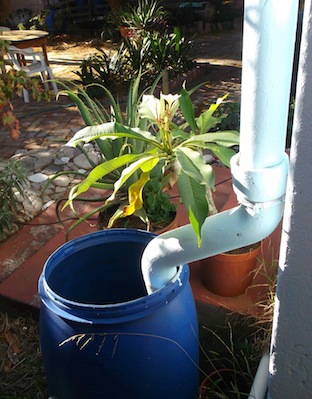
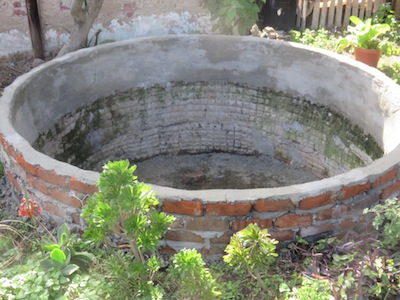 This fish pond is collecting rainwater from our roof.
This fish pond is collecting rainwater from our roof.What could be more eco water than free water falling from the sky ? We have three collection bins (literally wheelie bins) below our gutter downpipes for collecting rain water.
The system could be expanded by connecting the gutters to the fish ponds, as a lot of water runs over in a downpour. The fish pond water and rain water are used for the garden and the plants aren't complaining. In the past I've actually lost many plants that don't like chlorinated tap water, for example cypress, but rain water and fish water are both very friendly to plants. Since we have stopped watering the garden with a hose I have had no more of these sudden deaths where the plant becomes brown and dies overnight.
--------
---------
---------
Restore Nature Newsletter
I've been writing for four years now and I would love to hear from you
Please let me know if you have any questions, comments or stories to share on gardening, permaculture, regenerative agriculture, food forests, natural gardening, do nothing gardening, observations about pests and diseases, foraging, dealing with and using weeds constructively, composting and going offgrid.
SEARCH
Order the Kindle E-book for the SPECIAL PRICE of only
Prices valid till 30.09.2023
Recent Articles
-
Rose
Dec 17, 23 04:08 AM
I am doing research on growing wildlife foraging plants to use in enhancement plantings with wildlife in mind. My thoughts after seeing bears too skinny -
Seeds for a bred Sweeter less acidic Kei apple
Nov 20, 23 03:24 AM
Greetings Greenidiom, I'm a small farmer in kenya. I'm looking to plant a Green fence around a 6 acre plot of land and, I'd wish to make it of kei apples -
Mrs Laura Robinson
Oct 08, 23 02:17 AM
How do I get a copy of the soil aggregation poster??
"How to start a profitable worm business on a shoestring budget
Order a printed copy from "Amazon" at the SPECIAL PRICE of only
or a digital version from the "Kindle" store at the SPECIAL PRICE of only
Prices valid till 30.09.2023


